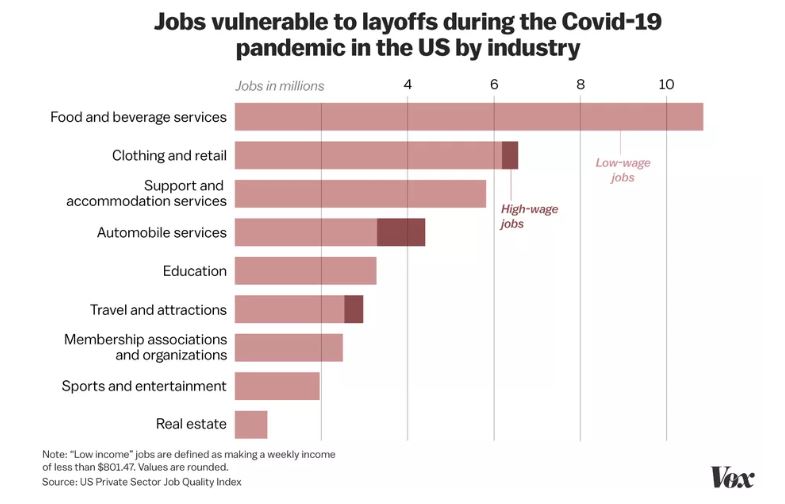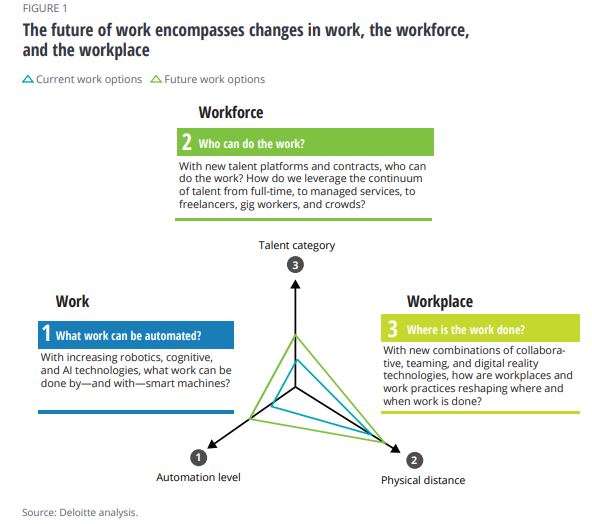Redeploying talent post COVID

It is 5 AM on the clock, Anna wakes up to get ready for work, makes some food for herself, and switches on her laptop. She meets and greets her colleagues on chat and starts to prepare for her virtual meeting with a business client.
In some other corner of the world, Steven, who worked for a hotel-chain is scrolling through jobs on LinkedIn on one tab, and browsing through courses on the other tab, because he is out of work.
This is the new reality brought on by the pandemic and these two examples are only very small pieces of a bigger picture that is being repainted on the canvas of the business ecosystem. The pandemic has shaken up countries, economy, business models, and work structures. The global health crisis is being looked at as the most uncertain disruptor that has accelerated the transformation journey for many. However, as it caught the leaders off-guard, the readiness to adapt to the change is less. Slowly and gradually, every nation, employer, and all the stakeholders are together grappling with the challenges and navigating through the new opportunities the COVID-19 crisis has brought with it.
Among the many things undergoing disruption is jobs, there are some that have become more important and “essential” than ever, and there are others threatened to become redundant.
The International Labour Organization has forecast that the pandemic could reduce global working hours by nearly 7 percent in the second quarter of 2020—equivalent to 195 million full-time jobs.1 McKinsey’s analysis suggests that, in regions as diverse as Africa, Europe, and the United States, up to a third of the workforce is vulnerable to reduced income, furloughs, or layoffs as a result of the crisis. Many millions of jobs could be lost permanently.
It has become absolutely critical that talent leaders now invest their time and effort in identifying the critical roles, mapping the skill requirements, and preparing the workforce for the now and the future of work. Talent leaders would have to work along with the other stakeholders like the employees, the government, and other associations. The process starts with building on the broad views of the sectors, functions, and occupations at risk. On the other hand, also focusing on the roles that have become more relevant amid the pandemic.
Identifying vulnerable & emerging jobs
In Europe and the United States, just two service industries (accommodation and food services plus wholesale and retail) account for around 40 percent of all vulnerable jobs. Among occupations, more than 80 percent of customer-service and sales roles are at risk. McKinsey suggests that to deepen the effectiveness of such efforts and to open up new job opportunities, governments and other key institutions can quickly create a more granular picture of where jobs are at risk and where there is additional demand for labor.

Each occupation can be assessed according to the level of disease exposure inherent in the role and the degree of demand shock that the occupation has experienced during the crisis.
Countries in every region and at every development stage need to ensure that similar analysis is undertaken so that they can identify the most vulnerable groups—and target interventions to safeguard the employment of those groups.
This assessment can also consider where demand for labor has increased. For example, its analysis of the Australian labor market shows that, during the crisis, significant new job opportunities have been created in the grocery, call-center, and information- and communication-technology (ICT) sectors. In Singapore, also, this week it was reported that more jobs will emerge in the infocommunications space over the next three years. The role of sectors like IT/ITeS, FMCG, Pharmaceuticals have become more critical. Further, the demand for digital skills across sectors will be on the rise as operating in the virtual environment now becomes the reality. From education, to banking services, to shopping, and what not will be done virtually.
Hence, the role of graphic designers, digital marketers, and coders will also become important. However, the nature of the job could change. This brings us to the next step of redesigning jobs in the phase of the pandemic.
Permanent vs Gig
For some time now, most talent leaders we interviewed would choose permanent employees over gig workers as they would prioritize aspects such as loyalty, long-term commitment, among other aspects. However, the pandemic is expected to shift the priorities and as managing costs, and achieving more in less becomes essential, the leaders may choose to adapt gig working models.
Even work-from-home seemed like a far-fetched dream, a few months back but most companies today operate remotely. Similarly, the employers will soon come to realize the benefits of the gig working model and have leaner organizational structures. This also comes as good news for the multi-skilled talent who can now have multiple sources of income.
After identifying the critical roles required to achieve the business outcomes, employers need to identify which ones can be outsourced on contractual basis and which ones would require permanent talent in place. Based on their role requirement, business and HR leaders can also identify employees, who can wear multiple hats, within the company.

This model of future of work, workplace, and worforce laid out by Deloitte is the NOW of work. It is the new reality. The organizations can use these key pillars and re-organize how work is done, where work is done, and by whom the work is done.
But as gig working models become the new reality, government support is needed to introduce policies to support the interests of the freelancers, including wage protection, health benefits and safety assurance. In India, the Karnataka government, in fact, has reportedly commenced deliberations for introducing a new labour legislation focused on the gig economy. In Singapore also the government has increased the focus on creating regulations to support gig workers.
Even the organizational culture and the current HR policies of the companies would have to become more inclusive for the gig workers. But before employers rejig their working models and organizational structures, they must do an internal talent assessment and check their skills-readiness. A similar exercise should be followed at national and international level to analyse if the workforce is prepared for the roles in demand in the now and the future of work. Even the workforce has to take the ownership of their own learning and development and see how they can become more job-ready.
Reskill your way to a better future
In our 2020 Global Human Capital Trends survey by Deloitte, 53 percent of respondents said that between half and all of their workforce will need to change their skills and capabilities in the next three years. Yet despite the expectation of organizations to do more to address skills and capabilities shortages, our survey shows that most organizations do not have the insights they need to get started. Fifty-nine percent said they need additional information to understand the readiness of their workforce to meet new demands, and 38 percent said that identifying workforce development needs and priorities is their greatest barrier to workforce development.
To map the skill-requirements, employers must now wisely invest in data analytics and leverage the available solutions to strengthen their internal talent mobility. The investment made today by employers in the entire reskilling initiative from assessing to training will go a long way.
“Both employees and employers must move toward a mindset of continuous learning, contributing to a whole-of-society readiness to handling unexpected disruptions. It is important to ensure that employees continuously develop and advance their capabilities, and contribute to their organisations in new ways,” said Svend Janssen, Head of Asia at Western Union Business Solutions.
Workers who are able to constantly renew their skills and learn new ones are those who will be most able to find employment in today’s rapidly shifting job market.
Some of the top skills and jobs that will be in focus include Software & Applications Programmers, Data analysts, Health Care & Social Assistance, Digital skills, and RPA skills. Soft skills like resilience, adaptability, critical thinking, innovation, and entrepreneurship will also be high in demand. Artificial intelligence and emotional intelligence.
“If anything, this situation has underlined the critical need for visibility and contingency plans in supply chain processes especially for companies whose businesses have been affected due to the supply chain disruption,” said Singaram Venkatachalam, Chief Operations Officer at Botsync.
These supply chain personnel working behind the scenes to keep businesses running have never been more critical. Further, as automation in the supply chain is becoming a common practice to ensure continuity, Venkatachalam said it presents the opportunity for restructuring certain job functions, so they add more value than they could originally.
“This will take place through re-training and skill enhancement capacities across sectors. The vision for our Botsync Labs division, where we provide robotics training courses and materials, is to help companies re-train their employees to play a more critical and essential role within an automated work-space,” he added.
The times are tough for all and the job market is undergoing transition which no one can any longer ignore. So be it the employer or employee, it is time to pull up the socks and respond to the rapidly changing working environment. To ensure business continuity and survive and thrive amid the crisis the focus now has to be equally on redeploying and reskilling talent with better data insights, market awareness and agile organizational culture.
















